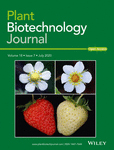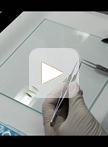- EN - English
- CN - 中文
Low-cost and High-throughput RNA-seq Library Preparation for Illumina Sequencing from Plant Tissue
植物组织中用于Illumina测序的低成本、高通量RNA-seq文库制备
(*contributed equally to this work) 发布: 2020年10月20日第10卷第20期 DOI: 10.21769/BioProtoc.3799 浏览次数: 8171
评审: Amey RedkarTatsuya NorobiAnonymous reviewer(s)
Abstract
Transcriptome analysis can provide clues to biological processes affected in different genetic backgrounds or/and under various conditions. The price of RNA sequencing (RNA-seq) has decreased enough so that medium- to large-scale transcriptome analyses in a range of conditions are feasible. However, the price and variety of options for library preparation of RNA-seq can still be daunting to those who would like to use RNA-seq for their first time or for a single experiment. Among the criteria for selecting a library preparation protocol are the method of RNA isolation, nucleotide fragmentation to obtain desired size range, and library indexing to pool sequencing samples for multiplexing. Here, we present a high-quality and a high-throughput option for preparing libraries from polyadenylated mRNA for transcriptome analysis. Both high-quality and high-throughput protocol options include steps of mRNA enrichment through magnetic bead-enabled precipitation of the poly-A tail, cDNA synthesis, and then fragmentation and adapter addition simultaneously through Tn5-mediated ‘tagmentation’. All steps of the protocols have been validated with Arabidopsis thaliana leaf and seedling tissues and streamlined to work together, with minimal cost in money and time, thus intended to provide a beginner-friendly start-to-finish RNA-seq library preparation for transcriptome analysis.
Keywords: Transcriptomics (转录组学)Background
The ability to assay the transcriptional landscape revolutionized the study of biology, through Southern blotting, expressed sequence tag (EST) analysis, microarrays, and finally RNA sequencing (RNA-seq). RNA-seq in particular, through its unprecedented range and sensitivity, allows investigation of otherwise intractable questions in gene regulation (Lister et al., 2008; Mortazavi et al., 2008; Wang et al., 2009). Advanced applications of RNA-seq include expanding the sample size for study across time or tissue, allowing gene regulatory network inference (de Luis Balaguer et al., 2017), and refining understanding of precision responses in a finer scale, such as in single- or few-cell transcriptomics experiments (Efroni and Birnbaum, 2016). The range of biological questions that can be addressed by RNA-seq, and its use, have risen dramatically since its introduction (Hrdlickova et al., 2017). However, many factors have limited its use more broadly, particularly in non-specialist labs.
One of the chief restricting factors of RNA-seq is its overall cost. While the cost of sequencing itself has fallen greatly, the cost of preparing libraries for sequencing has not experienced such a dramatic shift (Rohland and Reich, 2012; Hou et al., 2015). The prohibitive cost of library preparation is compounded by the growing understanding of biological variability in transcription (Busby et al., 2013), hence requiring larger numbers of biological replicates and finer dissection of tissue-specific responses which, combined, lead to a requirement for greater numbers of libraries to address any single question (Yuan et al., 2018). This greater number of libraries is not only more expensive but can cost greater amounts of time invested in sample preparation, especially as not all library preparation protocols are easily scalable. Recent advances in RNA-seq library preparation have the potential to ameliorate these issues, increasing speed and decreasing cost of sample preparation for RNA-seq experiments.
Originally, preparation of sequencing libraries typically involved fragmentation of nucleic acids via enzyme digestion, sonication, or divalent cations and heat with RNA, followed by ligation with adapter sequences for both library identification and amplification. The use of a hyperactive Tn5 transposase allows for fragmentation and adapter tagging in one step, termed ‘tagmentation’ (Picelli et al., 2014). This simple dual-step procedure requires no hardware beyond a thermocycler, is amenable to large-scale multiplexing, and requires as little as picogram amounts of input nucleic acid (Adey et al., 2010; Brouilette et al., 2012). The Nextera kits available from Illumina use Tn5-based tagmentation technology, but several recent studies have shown that user-prepared Tn5 transposasome and associated buffers perform as well as commercially available versions (Picelli et al., 2014; Pisupati et al., 2017; Hennig et al., 2018).
While Tn5 presents a library preparation technique suitable for multiplexing, the extraction of RNA and preparation of cDNA remain a bottleneck. RNA extraction may be performed by traditional Trizol extraction or through the use of RNA extraction kits, both of which are traditionally not easily scalable and can become prohibitively expensive when preparing large numbers of samples. Most papers exploring user-prepared Tn5 have focused on small numbers of samples with many technical replicates, but techniques for RNA extraction with many samples and cDNA synthesis from plant tissue are available (Kumar et al., 2012; Townsley et al., 2015).
Here, we present a tissue-to-library RNA-seq protocol, amenable to multiplexing with complete preparation of 96 samples in three days, with costs of less than £10 per sample. Moreover, we include notes on optimization to accommodate end-user modifications, and finally novel insights, such as the use of 9-bp indices, which facilitate downstream analysis.
Materials and Reagents
Notes:
- Store all reagents at room temperature unless otherwise noted.
- Reagents used in multiple sections are only mentioned once here.
- For total RNA and mRNA isolation
- 2-ml SafeSeal microcentrifuge tubes (Sarstedt, catalog number: 72.695.500 )
- 1.5-ml TubeOne® microcentrifuge natural tubes, free from RNase, DNase, DNA and Pyrogen (STARLAB, catalog number: S1615-5550 )
- Tungsten carbide beads (Qiagen, catalog number: 69997 )
- 10-µl Graduated Tip, Refill, RNase, DNase, DNA and Pyrogen free (STARLAB, catalog number: S1111-3700-C )
- 200-µl Yellow Tip, Refill, RNase, DNase, DNA and Pyrogen free (STARLAB, catalog number: S1111-0706-C )
- 1,250-µl XL Graduated Tip, Refill, RNase, DNase, DNA and Pyrogen free (STARLAB, catalog number: S1112-1720-C )
- Plant tissue: 5-week-old and 2-week-old Arabidopsis thaliana plants were used successfully
- Liquid nitrogen
- RNA Clean & Concentrator-25 with Zymo-SpinTM IIC Column (Zymo Research, catalog number: R1017 or R1018 )
- TRI Reagent® (Sigma-Aldrich, catalog number: T9424 )
Note: Store at 4 °C. - DEPC-Treated Water (InvitrogenTM, catalog number: 11597065 )
Note: RNase-free water (e.g., Sigma-Aldrich, catalog number: W4502 ) works equally well. - ≥ 99.8% ethanol/EtOH (Sigma-Aldrich, catalog number: 32221-M )
- RNaseZapTM RNase Decontamination Solution (InvitrogenTM, catalog number: AM9780 , AM9782 or AM9784 )
- For high-throughput total RNA isolation
- Conical tubes (Corning, Falcon, catalog numbers: 352096 and 352070)
- Glass beads for tissue homogenization (Sigma-Aldrich, catalog number: Z250473 )
- Tris-HCl pH 8.0, 1 M (InvitrogenTM, catalog number: AM9855G )
- LiCl, 8 M (Sigma-Aldrich, catalog number: L7026-500 ml )
- EDTA pH 8.0, 0.5 M (Sigma-Aldrich, catalog number: 0 3690 )
- SDS (InvitrogenTM, catalog number: AM9820 )
- Dithiothreitol (DTT, Sigma-Aldrich, catalog number: 43815 )
- Antifoam A (Sigma-Aldrich, catalog number: A5633-100G )
- 5 M NaCl (InvitrogenTM, catalog number: AM9760G )
- 2-mercaptoethanol (Sigma-Aldrich, catalog number: M6250 )
Note: Store in hazardous chemical cabinet. - RNase-free water (Sigma-Aldrich, catalog number: W4502-1L )
- Streptavidin-conjugated magnetic beads (NEB, catalog number: S1420S )
Note: Store at 4 °C. - Biotinylated poly-dT oligo (Thermo Fisher, catalog number: NA)
Notes:- 5′-bio-ACAGGACATTCGTCGCTTCCTTTTTTTTTTTTTTTTTTTT-3′.
- Store at -20 °C.
- RNase-free PCR strips (Brooks Life Sciences, 4titude, catalog number: 4ti-0781 )
- Optional: Tween-20 (Sigma-Aldrich, catalog number: P1379-25ML )
- Optional Sera-mag speedbeads (Thermo Fisher, catalog number: 09-981-123 )
- Optional: SYBR green I (Thermo Fisher, catalog number: S7563 )
- Lysis/Binding Buffer (LBB) (see Recipes)
- htLBB (see Recipes)
- WBA (see Recipes)
- WBB (see Recipes)
- LSB (see Recipes)
- 1 M betamercaptoethanol (see Recipes)
- 5 mM DTT (see Recipes)
- Optional: Serapure (see Recipes)
- For RNA cleanup and cDNA preparation
Notes:- All reagents in Procedures C and D should be stored at -20 °C;
- Wherever possible, we recommend purchasing reagents as solutions rather than powders to minimize manipulation prior to use and facilitate prevention of RNase contamination.
- Dynabeads® Oligo (dT)25 (Thermo ScientificTM, catalog number: 61002 )
- Random Decamers (50 µM) (InvitrogenTM, catalog number: AM5722G )
Note: The Random Primer Mix (New England BioLabs, catalog number: S1330S ) can also be used as an alternative. The random primer mix may give slightly better coverage of the entire coding sequence. - RNaseOUTTM Recombinant Ribonuclease Inhibitor (InvitrogenTM, catalog number: 10777019 )
- DNase I recombinant, RNase-free (Roche, catalog number: 04716728001 )
Note: To remove large amounts of DNA contamination, alternatively TURBO DNA-freeTM Kit (InvitrogenTM, catalog number: AM1907 ) may be used. - High-fidelity polymerase (Thermo ScientificTM, Phusion, catalog number: F534L )
- High-fidelity reverse transcriptase (InvitrogenTM, SuperScript III, catalog number: 18080093 )
Optional: For some applications, a less high-fidelity reverse transcriptase (e.g., RevertAid, Thermo ScientificTM, catalog number: K1622 ) may be used at a great cost savings. - dNTP mix, 25 mM each (Thermo ScientificTM, catalog number: R1121 )
- E. coli DNA Ligase and buffer (New England BioLabs, catalog number: M0205S/L )
- E. coli DNA Polymerase I (New England BioLabs, catalog number: M0209S/L )
- RNaseH (New England BioLabs, catalog number: M0297S/L )
- E. coli Exonulease I (New England BioLabs, catalog number: M0293S/L )
- RNase A, DNase and protease-free (10 mg/ml) (Thermo ScientificTM, catalog number: EN0531 )
- Ampure XP beads (Beckman Coulter, catalog number: A63880 )
- Qubit dsDNA HS Assay Kit (InvitrogenTM, catalog number: Q32851 or Q32854 )
- For Tagmentation library preparation
- Nextera DNA Library Prep Kit (Illumina, catalog number: FC-121-1030 )
Note: This has been discontinued, and listed reagent in item 2 (below) is the replacement. - Illumina Tagment DNA TDE1 Enzyme and Buffer Kits (Illumina, catalog number: 20034197 or 20034198 )
- NEBNext® High-Fidelity 2× PCR Master Mix (New England BioLabs, catalog number: M0541S/L )
- KAPA SYBR FAST qPCR Master Mix (2×) Universal (Roche, catalog number: KK4600 , KK4601 , KK4602 or KK4618 )
- TAPS-NaOH (Sigma-Aldrich, catalog number: T5130 )
- MgCl2 (Sigma-Aldrich, catalog number: M1028 )
- PEG 8000 (Sigma-Aldrich, catalog number: 1546605 )
- Homemade 5× tagmentation buffer (see Recipes)
- Nextera DNA Library Prep Kit (Illumina, catalog number: FC-121-1030 )
- For library indexing
- Custom designed Illumina sequencing compatible index primers and synthesized by Sigma (Supplemental)
Equipment
- Tissue homogenizer (SPEX Sample Prep, Geno/Grinder)
Note: Qiagen TissueLyser also used successfully: sample plates should be rotated half-way through grinding to ensure even grinding. - Vortex mixer (any brand)
- NanoDropTM 8000 Spectrophotometer (Thermo ScientificTM, catalog number: ND-8000-GL )
- 2100 BioAnalyzer System (Agilent, catalog number: G2939BA )
- 4150 TapeStation System, optional (Agilent, catalog number: G2992AA )
- MagnetoPURE BIG SIZE (Chemicell, catalog number: MP-20 )
- 1.5-ml tube rotator mixer (SoCal BioMed, Waverly, catalog number: RT1-E )
- Magwell 96-well magnetic separator (EdgeBio, catalog number: 57624 )
- Plate mixer (Scientific Industries, Genie, catalog number: Si-0400A )
- Microcentrifuge (Thermo ScientificTM, MicroCL 17, catalog number: 75002450 )
- Strip centrifuge (any brand)
- PCR machine (any programmable thermo-cycler)
- 96-well microplate heat block, optional (any brand)
Note: Preferred for single temperature incubation steps. - Multichannel pipette, 0.5-10 µl (Eppendorf, catalog number: ES-12-10 )
- Multichannel pipette, 30-300 µl (Eppendorf, catalog number: ES-12-300 )
- QubitTM Flex Fluorometer (InvitrogenTM, catalog number: Q33327 )
- Real-time quantitative PCR machine, here we use CFX96 Touch Real-Time PCR Detection System C1000 TouchTM (BioRad)
Procedure
文章信息
版权信息
© 2020 The Authors; exclusive licensee Bio-protocol LLC.
如何引用
Bjornson, M., Kajala, K., Zipfel, C. and Ding, P. (2020). Low-cost and High-throughput RNA-seq Library Preparation for Illumina Sequencing from Plant Tissue. Bio-protocol 10(20): e3799. DOI: 10.21769/BioProtoc.3799.
分类
植物科学 > 植物生物化学 > RNA > RNA 提取
系统生物学 > 转录组学 > RNA测序
您对这篇实验方法有问题吗?
在此处发布您的问题,我们将邀请本文作者来回答。同时,我们会将您的问题发布到Bio-protocol Exchange,以便寻求社区成员的帮助。
Share
Bluesky
X
Copy link













